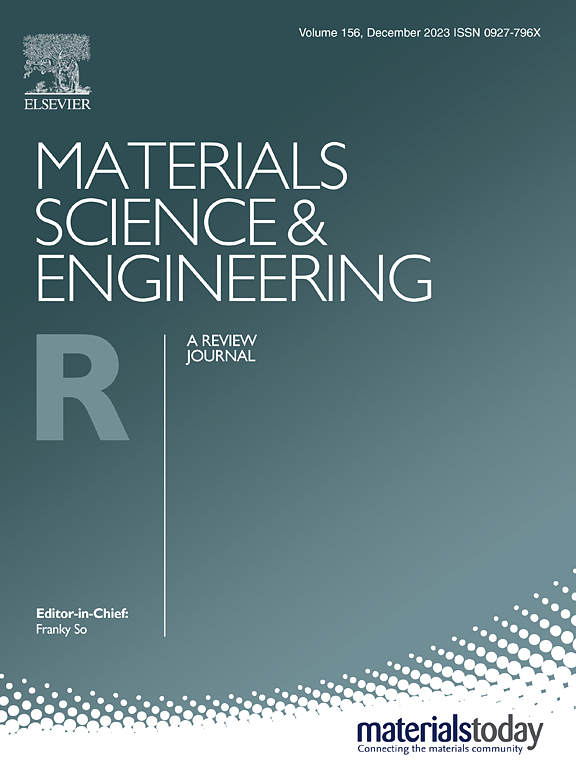带有超薄无针孔 P(VDF-TrFE)结晶膜的二维 MoTe2 铁电存储器晶体管的低 3 伏工作电压
IF 31.6
1区 材料科学
Q1 MATERIALS SCIENCE, MULTIDISCIPLINARY
引用次数: 0
摘要
有机铁电结晶聚合物 P(VDF-TrFE)因其无铅优势和工艺便利性而受到广泛关注。然而,P(VDF-TrFE)有一个长期存在的缺点,那就是它的工艺限制,即结晶膜厚度几乎固定在 100 nm 以下。因此,任何基于 P(VDF-TrFE)的铁电记忆场效应晶体管(FeFET)的工作电压一直都超过 10 V。在这里,我们在铂和金栅极上创新性地制造出了薄∼20 nm的P(VDF-TrFE)结晶层,使具有二维(2D)MoTe2 沟道的铁电场效应晶体管能在最低 3 V 脉冲下工作。这样薄的晶体层是在 5 纳米薄的晶体种子层(P(VDF-TrFE)-brush)初始生长后,通过旋涂实现的。这种超薄 P(VDF-TrFE)- 刷子能有效抑制 P(VDF-TrFE)- 溶液在旋涂过程中的去湿问题,从而实现经典 P(VDF-TrFE) 的良好表面能量匹配和无针孔保形涂层。因此,p-MoTe2 非易失性存储器场效应晶体管能很好地实现 3-4 V 的脉冲操作,且无漏电流损失。这些数字可以说是报告中的最低值之一。本文章由计算机程序翻译,如有差异,请以英文原文为准。
Low 3 volt operation of 2D MoTe2 ferroelectric memory transistors with ultrathin pinhole-free P(VDF-TrFE) crystalline film
Organic ferroelectric crystalline polymer, P(VDF-TrFE) has attracted broad attentions due to its lead-free benefits and process convenience. However, it has a long-standing drawback, its process limit in crystalline film thickness, whose minimum is almost fixed as ∼100 nm. Hence, operation voltage of any P(VDF-TrFE)-based ferroelectric memory field-effect transistors (FeFETs) has always been over 10 V. Here, innovatively thinned ∼20 nm P(VDF-TrFE) crystalline layers are fabricated on Pt and Au gate, empowering FeFETs with two dimensional (2D) MoTe2 channel to operate under minimum 3 V pulse. Such thin crystalline layer is achieved through spin-coating after initial growth of 5 nm-thin crystalline seed layer, P(VDF-TrFE)-brush. This ultrathin P(VDF-TrFE)-brush effectively inhibits the de-wetting problem of P(VDF-TrFE)-solution during spin-coating, leading to good surface-energy matching and pinhole-free conformal coating of classical P(VDF-TrFE). As a result, 3–4 V pulse operations of p-MoTe2 nonvolatile memory FETs are nicely realized without leakage current loss. These numbers may be regarded as one of the lowest values in report.
求助全文
通过发布文献求助,成功后即可免费获取论文全文。
去求助
来源期刊

Materials Science and Engineering: R: Reports
工程技术-材料科学:综合
CiteScore
60.50
自引率
0.30%
发文量
19
审稿时长
34 days
期刊介绍:
Materials Science & Engineering R: Reports is a journal that covers a wide range of topics in the field of materials science and engineering. It publishes both experimental and theoretical research papers, providing background information and critical assessments on various topics. The journal aims to publish high-quality and novel research papers and reviews.
The subject areas covered by the journal include Materials Science (General), Electronic Materials, Optical Materials, and Magnetic Materials. In addition to regular issues, the journal also publishes special issues on key themes in the field of materials science, including Energy Materials, Materials for Health, Materials Discovery, Innovation for High Value Manufacturing, and Sustainable Materials development.
 求助内容:
求助内容: 应助结果提醒方式:
应助结果提醒方式:


